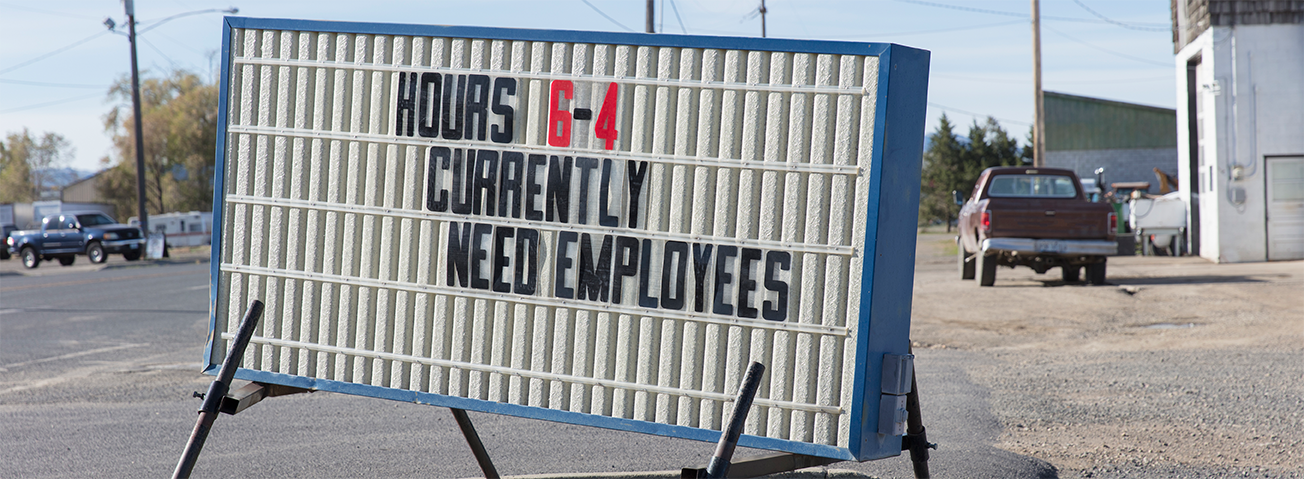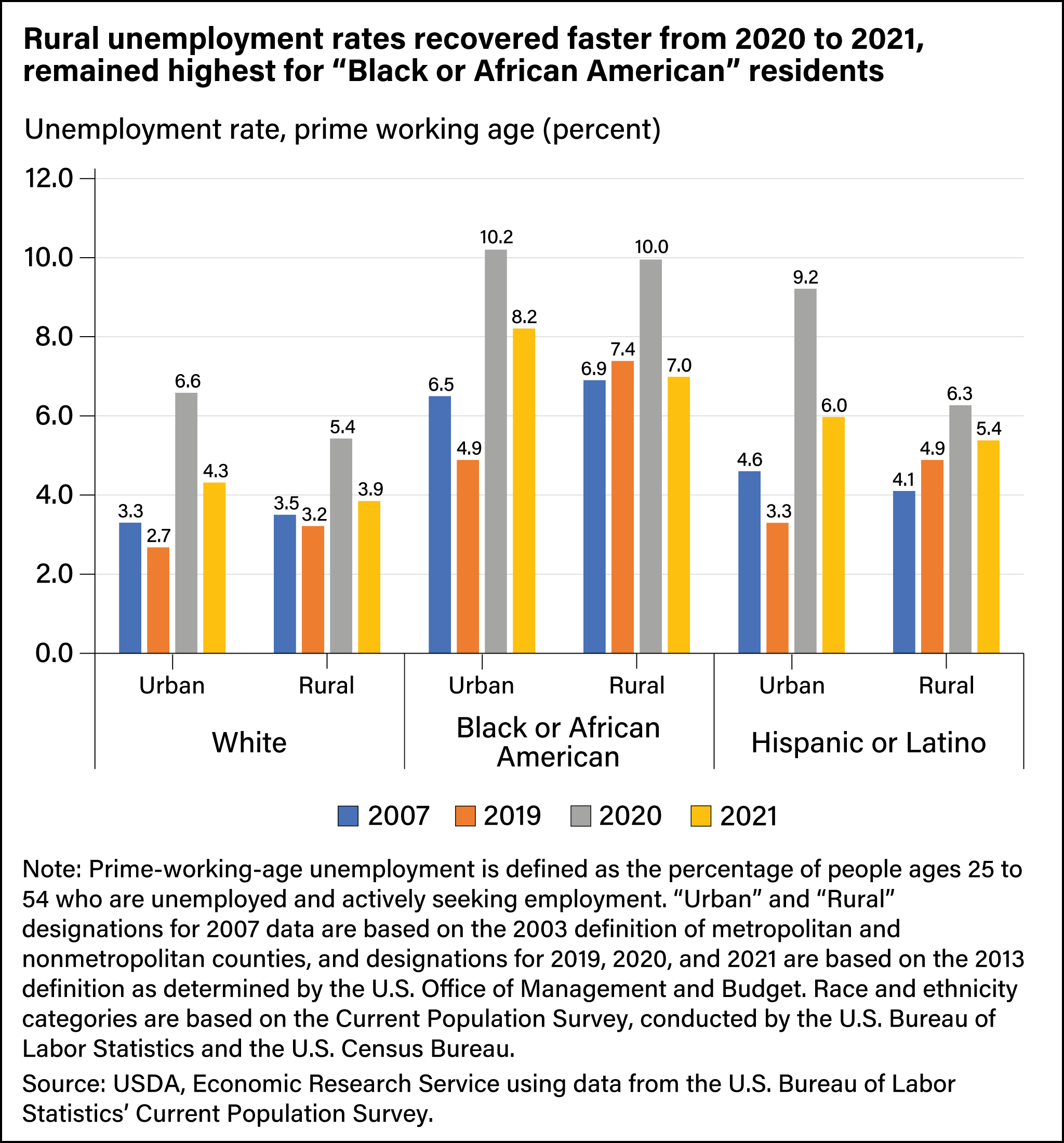
Coronavirus (COVID-19) Job Losses Hit Rural Areas Still Recovering From Great Recession
- by Austin Sanders
- 5/2/2022
By 2019, total employment in rural America had not yet recovered from jobs lost during and after the Great Recession (2007–2009), and according to a recently published USDA, Economic Research Service analysis, the Coronavirus (COVID-19) pandemic led to further job losses in 2020. Annual average employment levels in 2019 were only 97 percent of their pre-Great Recession levels in rural counties, while employment levels in urban counties had reached 111 percent of 2007 levels by 2019. The drop in rural employment from 2007 to 2019 partially coincided with an unprecedented period of rural population loss from 2010 to 2016 and an aging overall population.
Despite the loss in the total number of jobs in rural counties from 2007 to 2019, the prime-working-age unemployment rate was slightly lower in 2019 at 3.7 percent than in 2007, when it was 3.9 percent. Prime-working-age unemployment is the percentage of people ages 25 to 54 who are unemployed and actively seeking employment. By looking at unemployment rates for only people of prime working age, the effect that an aging population may have on unemployment rates over time is minimized, as is the effect of different age compositions across racial and ethnic groups.
Prime-working-age unemployment rates did not decrease for all races and ethnicities in rural areas, however. Compared with rural “White” residents, unemployment rates were 3.4 percentage points higher for the U.S. Census Bureau’s category of rural “Black or African American” (3.5 percent vs. 6.9 percent) in 2007 and 0.6 percentage point higher for rural residents identified as “Hispanic or Latino” (3.5 percent vs. 4.1 percent). Those gaps widened from 2007 to 2019 to 4.2 percentage points for rural residents in the “Black or African American” category (3.2 percent compared with 7.4 percent) and 1.7 percentage points for rural residents identified as “Hispanic or Latino” (3.2 percent compared with 4.9 percent).
During the Coronavirus pandemic, restrictions on social and business activity, social distancing, and a decrease in consumer activity led to a decline in total employment and an increase in unemployment rates in urban and rural counties. In 2020, total rural employment dropped to 92 percent of 2007 levels, lower than at any point in the Great Recession. Prime-working-age unemployment rates in rural counties increased 2.2 percentage points from 2019 to 2020. Among the largest racial/ethnic groups, these rates rose most for “Black or African American” (2.6 percentage points), followed by “White” (2.2 percentage points), and “Hispanic or Latino” (1.4 percentage points).
However, as the economy began to recover in 2021, total employment rose, and prime-working-age unemployment rates dropped faster in rural counties than in urban counties. By 2021, prime-working-age unemployment rates in rural counties returned to near, or in the case of “Black or African Americans,” below their pre-pandemic levels of 2019. However, the 2021 rates were still higher for “Black or African Americans” than other groups.
This analysis was conducted using data from the U.S. Bureau of Labor Statistics’ Current Population Survey and Local Area Unemployment Statistics.
This article is drawn from:
- Employment & Education - Rural Employment and Unemployment. (n.d.). U.S. Department of Agriculture, Economic Research Service.
You may also like:
- Rural Poverty & Well-Being. (n.d.). U.S. Department of Agriculture, Economic Research Service.
- Atlas of Rural and Small-Town America. (n.d.). U.S. Department of Agriculture, Economic Research Service.
- Dobis, E.A., Krumel, T., Cromartie, J., Thomas (Conley), K.L., Sanders, A. & Ortiz, R. (2021). Rural America at a Glance: 2021 Edition. U.S. Department of Agriculture, Economic Research Service. EIB-230.
- Pender, J. (2021). The COVID-19 Pandemic and Rural America.


